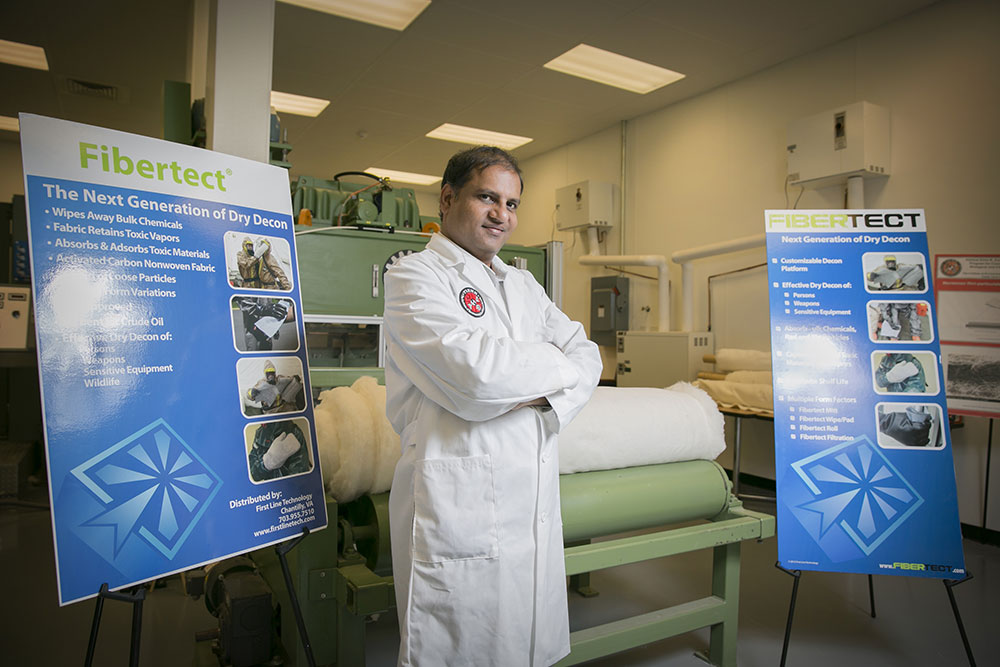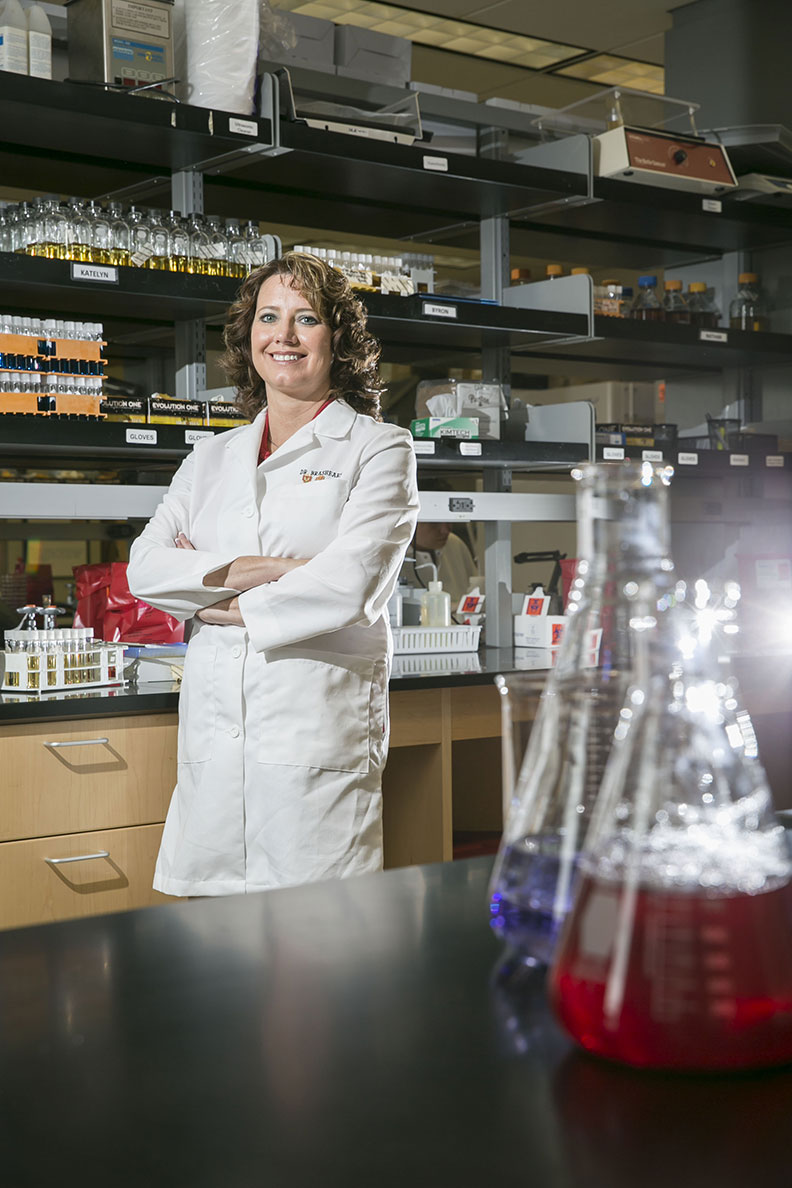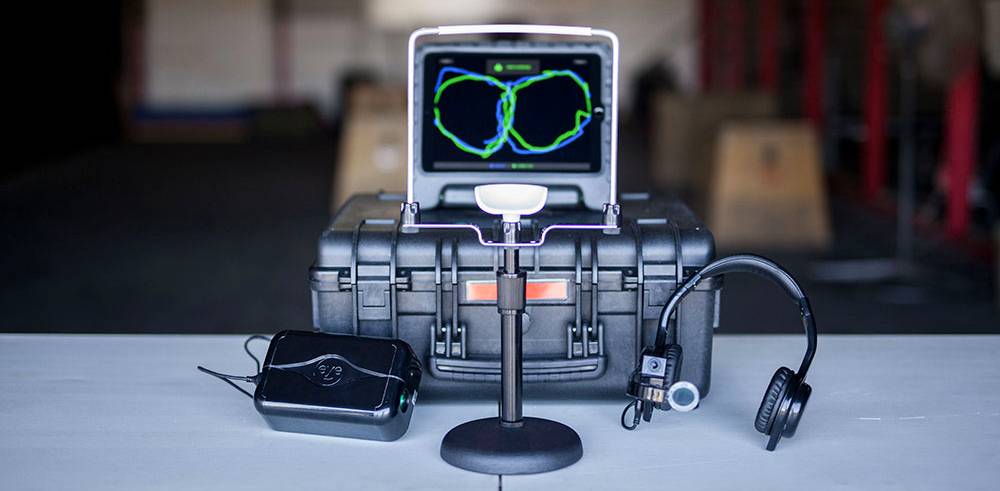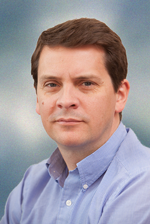Innovation on Campus
September 6, 2016
Texas Tech University faculty are creating technologies that could change the face of their respective fields. Here are three examples of Texas Tech ingenuity and how they work.

To meet the changing demands of the 21st century, Texas Tech University is expanding its entrepreneurial and innovative endeavors.
The transfer of new knowledge and technology to the communities it serves is a natural extension of Texas Tech's drive to become a national research university.
"The mutual exchange of knowledge and resources between the university and public and private stakeholders promotes economic growth in the state and nation," said Lawrence Schovanec, Texas Tech's president. "Texas Tech is becoming a formidable player in the global economy."
The university's success has been noted in its designation as an Innovation and Economic Prosperity University by the Association of Public and Land-grant Universities. The designation recognizes the university's engagement in an array of economic development efforts.
The Office of Research Commercialization (ORC) helps move research discoveries from the university laboratory to the marketplace. ORC works with researchers and business partners to help translate Texas Tech innovations into commercial applications and successfully bring them to market.
The commercialization of new innovations happens through the technology transfer process, and begins with intellectual property, said David Snow, director of the ORC. Managing the ownership of intellectual property is key to creating commercial opportunities for new innovations to enter the market. Patents help define a new innovation, which is used to exclude others from operating in a space long enough for a commercial partner (licensee) to establish a market position. This has the added benefit of creating revenue streams back to the inventors and university. The increase in innovation has led to an increase in patents filed, licenses granted and startup companies formed.
"ORC begins the commercialization process when an inventor discloses an invention," he said. "Once an invention is disclosed, the ORC meets with the inventor. We will then work with the inventor to do a technology assessment to determine patentability and marketability by completing a search for similar technologies, patents or licenses. If the assessment is positive, the ORC will initiate intellectual property protection for the technology and develop an appropriate commercialization strategy."
Snow said his office works with the inventor and local entrepreneurs to create a startup company, or may license the technology directly to an established company. Either scenario will result in a license agreement between the ORC and the new or established business partner. The license agreement will include terms and conditions for the use of the technology, commercial development milestones, and the amount of compensation to the university (and inventor) in fees, royalties and equity.
"After a license agreement is in place, ORC monitors and supports the licensee to ensure compliance with contract terms and success in the marketplace," he said.
Here are a few of the innovations recently developed on campus that are in or heading to the marketplace.
Eco-Friendly Decontamination
 For more than a decade, scientists at The Institute of Environmental and Human Health
have been reinventing and repurposing a nonwoven decontamination product called FiberTect®.
For more than a decade, scientists at The Institute of Environmental and Human Health
have been reinventing and repurposing a nonwoven decontamination product called FiberTect®.
The latest version of FiberTect® developed in 2013 has proven itself more viable at cleaning up a nerve chemical surrogate than the decontamination substance currently used by the U.S. Department of Defense (DoD), which is currently being phased out.
Seshadri Ramkumar, lead investigator on the project and inventor of FiberTect®, said the basic structure is still the same. However, the improved iteration takes up liquid more quickly and can adsorb vapors more efficiently than the powdered decontaminant used by the DoD.
Part of the added benefit of this new FiberTect® is that it can use biodegradable cotton, Ramkumar said. A problem with the powdery form is that it leaves dirty residue.
"That is why the U.S. Department of Defense wants to get away from the powdery form," he said. "FiberTect® is a fabric. It is skin-friendly. When it comes to adsorbing the surrogate nerve agent's vapors, it just works better. So the powdered decontaminant will be phased out."
Originally developed to protect the U.S. military from chemical and biological warfare agents, Fibertect® contains a fibrous activated carbon center that is sandwiched between layers of nonwoven materials.
The top and bottom layers, made from raw cotton, can absorb oil while the center layer holds volatile compounds such as those found in oil spills or blistering agents such as mustard vapors or other toxic chemicals. It also makes use of low-grade cotton.
FiberTect® was approved for use as a sorbent by the U.S. Environmental Protection Agency, Ramkumar said. The product already has proven that it can also adsorb toxic fumes associated with chemical remediation, he said. Evaluation by Lawrence Livermore National Laboratory found that it can retain mustard gas vapors efficiently and does not shed loose particles.
The process to make FiberTect® has received a patent and has been validated for use as a low-cost decontamination wipe for the U.S. military and the Department of Homeland Security.
Deliciously Safe
 A food purifying technology designed at Texas Tech may hold the key to safer food
and longer shelf-life, and the spin-off company created to commercialize the microwave
technology may soon bring the results to the marketplace.
A food purifying technology designed at Texas Tech may hold the key to safer food
and longer shelf-life, and the spin-off company created to commercialize the microwave
technology may soon bring the results to the marketplace.
MicroZap (MZ) is the technology company commercializing the microwave and food safety research of Texas Tech scientist Mindy Brashears, professor in food microbiology and food safety, as well as director of the International Center for Food Industry Excellence (ICFIE). Other creators include Andreas Neuber, associate director of the Center for Pulsed Power and Power Electronics and AT&T Professor in the Whitacre College of Engineering; Chance Brooks, associate professor of meat science in the Department of Animal and Food Science; and Todd Brashears, associate professor in the Department of Agricultural Education and Communications.
Developers said the MicroZap technology will heat, but not directly damage the DNA of a biological substance. Microwaves interact with the molecules in the food product and reduce pathogens such as bacteria and molds.
"We have been extremely successful treating mold in bread products and have extended the shelf-life of bread to 60 days," Neuber said.
Mindy Brashears said the technology for MicroZap was originally invented by a group of scientists in Italy. The Italian scientists found Texas Tech's ICFIE and invited the group to Italy to learn the technology. As scientists collaborated, they discovered many ways that they could modify the technology to make it better and take it to the next level, Brashears said.
The company received $1.5 million in March 2010 from the state's Emerging Technology Fund to get the project off the ground.
Brashears said this technology can have a huge impact on food security, which means providing the world with a safe and abundant food and water supply allowing food to stay fresher longer in areas where food can be scarce.
"We started with whole eggs," Brashears said. "You can take a whole egg, put it through the microwave and pasteurize it, kill the salmonella without cooking the egg and without changing the functional properties. You can still make a meringue out of it, it still looks like a fried egg if you fry it – this just shows the unique way that we target this energy to kill the bacteria."
Neuber said they've modified several devices, even a washer and dryer unit to treat towels and linens for viruses such as MRSA, a sometimes flesh-eating bacteria, which could be commercialized for businesses like hospitals and gyms. The modifications all have in common that the microwave levels inside the units are much higher than a standard microwave, allowing them to achieve higher level of pathogen reduction.
Brashears said they do have a goal of having a household unit or even a small unit that could be used in restaurants or at the grocery store.
Don Stull, CEO of MicroZap said, "Working with the scientists and engineers at Texas Tech on this project, such as Mindy and Andreas, has been extremely successful. Our collaboration with Texas Tech has greatly enhanced the process and technology to help make a tremendous impact on making food safe and eliminating food waste."
The Eyes Have It
 What started about five years ago as a cheaper way to track eye movements to improve
website design has morphed quickly into a new, powerful tool to assist health professionals
in diagnosing concussions – especially in the sports medicine arena.
What started about five years ago as a cheaper way to track eye movements to improve
website design has morphed quickly into a new, powerful tool to assist health professionals
in diagnosing concussions – especially in the sports medicine arena.
Brian Still, an associate professor of technical communication and rhetoric, said EyeGuide® has most recently brought to the market a new product called Focus, a 10-second concussion management tool.
"In 2014, we pivoted and we literally rebranded the company," Still said. "We moved away from making boutique, low-cost eye-tracking devices and selling them to universities to create a solution-driven application to assist doctors in determining if, say, an athlete has a concussion."
Save for a CAT scan, detecting concussions is largely a subjective process, Still said, and even scans can show a concussion only if there is bleeding on the brain. The best current indicator doctors use is a battery of tests that includes having a patient follow an object with their eyes to determine if there's an impairment with attention.
 "Now, doctors run the tests, but most importantly look into the eyes of the patient,"
he said. "The eyes are really one of the best indicators of a concussion. After that,
the doctor makes a gut call. As you can imagine, many athletes slip through cracks.
We have found a way to very quickly – as in 10 seconds quickly – measure an athlete's
ability to follow an object across screen. This is the same test that a physician
would do, only we've taken out the qualitative, subjective portion of the testing."
"Now, doctors run the tests, but most importantly look into the eyes of the patient,"
he said. "The eyes are really one of the best indicators of a concussion. After that,
the doctor makes a gut call. As you can imagine, many athletes slip through cracks.
We have found a way to very quickly – as in 10 seconds quickly – measure an athlete's
ability to follow an object across screen. This is the same test that a physician
would do, only we've taken out the qualitative, subjective portion of the testing."
EyeGuide employees have collected benchmark data for more than a year and a half, Still said, and their device is currently in active use at 30 sports clinics and schools, including some in Texas, Wisconsin, and New Jersey. Doctors working the Ultimate Fighting Championship circuit also have employed Focus.
The idea is to create a "beta-testing" community this next year before going "big," he said. Company organizers hope to market the device for use during football games at schools across the country, especially in light of recent concerns.
Focus started as the EyeGuide® Eye-Tracking System after researchers at Texas Tech searched for an inexpensive way to track a computer user's eyes on a website. This allowed researchers to follow user trends and improve design to make the page more effective, and the initial prototypes garnered major media attention.
Following more development, EyeGuide modified the device to help people with hand-mobility issues use their eyes to move a mouse around a computer screen, Still said.
Then in 2014, company managers decided to re-tool the original idea completely to meet demands for better concussion diagnosis. After four years of incubation at Texas Tech, EyeGuide bought out Texas Tech's portion of the business and is striking out on its own with the latest iteration of eye-tracking devices.
"In the four years we were incubated by the university, we were able to take our time and get it right," Still said. "That was a highly invaluable thing. If we'd been a startup in Austin on our own, we'd be dead by now. Next year, we plan to get really aggressive so that when we head into football season, we'll have a great data pool and good testimonials so that we can really go big. Long term, we see it getting even bigger, helping occupational medicine and even having these devices in hospitals. You can even detect problems like sleep deprivation, alcohol or drugs."
